-
Posts
424 -
Joined
-
Last visited
-
Days Won
5
Content Type
Profiles
Forums
Events
Store
Downloads
Gallery
Posts posted by C0D
-
-
-
What if it's this guy?
NORIKATSU (徳勝), Shōwa (昭和, 1926-1989), Hiroshima – “Seiryūshi Minamoto Norikatsu kore o kinsaku” (青龍子源徳勝謹作之), “Minamoto Norikatsu” (源徳勝), real name Nakahara Tokuji (中原徳二), born October 12th 1906, gō Seiryūshi (青龍子), he was basically a self-taught smith, taking the writings of Suishinshi Masahide as a guidline, he also worked as guntō smith (it is said about 180 guntō blades until the end of World War II), ryōkō no jōi (Akihide), Fifth Seat at the 6th Shinsaku Nihontō Denrankai (新作日本刀展覧会, 1941) (see picture right)
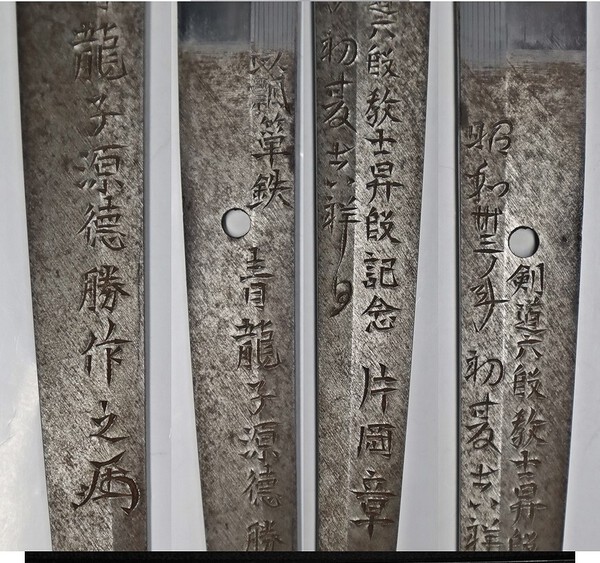
-
A little correction, the tsuba won't be exhibited at the museum as there'll be only pieces that actually got prizes, so no Nyusen
-
The texture is the result of the copper alloy, the patina just bring that out.
There's no need of punches if the nakago ana is carefully filed to accomodate a specific nakago.
Despite not being a flashy or complex piece is a well made composition and execution, patina also is very nice. Don't be fooled by the simple nature of this piece, to make a tsuba like this is not that easy as it might look.-
 1
1
-
-
My thoughts
1. exactly the same since it's a simple sukashi2. assuming a seppa size of 38mm the tsuba would be 75mm
3. the patina is way to uniform to be burnt, there would also be scales and the fact there's the seppa dai mark is present and clear suggest this wasn't been in the fire or been re-patinated after-
 1
1
-
-
NBTHK published the results today, with my big surprise there are a lot of entries in the metal engraving section (the one i was is), and many ranked below me. With Jeff Broderick, who's already a veteran of this contest, i'm the only other foreigner. Under this light i'm even more happy of my result.
Here's the results in Japanese2023年度研磨・刀身彫・彫金・白鞘・刀装・柄前・白銀の部 審査結果一覧hp.pdfHere translated in English with Google Translate
-
 10
10
-
 1
1
-
-
23 minutes ago, kissakai said:
Very nice Manuel
I was drawn to the flowing lines
Ford Hallam's first success was in this class
Do you do commissions?
Thank you, yes I do take commissions, of course my skills are limited to sukashi and simple engraving on iron and copper. I also did some restoration on iron tsuba.
-
Again, thank you all!
-
-
Thank you all, the design is actually an utsushi of this Akasaka tsuba https://www.touken-w...-guard/art0000971-1/. When i saw it i immediately loved the flow of it and wanted to reproduce it.
The results should be published on NBTHK website in a few days, i'll post the results here once they come out.
Dimensions are 75x76 mm and 5 mm thick-
 5
5
-
 2
2
-
-
20 minutes ago, Brian said:
Congrats Manuel! I think that's a lovely looking tsuba. Very nice indeed. Would not have known that was modern. Bravo.
Thank you Brian!
-
 2
2
-
-
I'm proud to announce that the tsuba i sent for 2023 NBTHK contest for newly made tsuba got accepted and ranked 7th Nyusen (入選七席).
Despite not being an high rank, to me, an amateur italian tsubashi with no teacher that got serious in making tsuba only few years ago, is a huge victory.
My tsuba will be shown in the New Sword Exhibition in NBTHK museum, so if you'll have the chance to see it there, i'll be happy to hear it from you.
This result encurages me to keep working hard to improve myself and to aim to higher ranks next years.
Manuel Coden 古伝
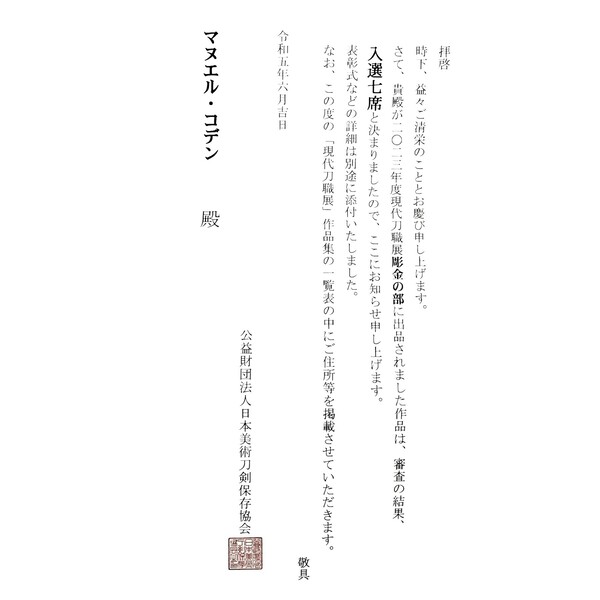
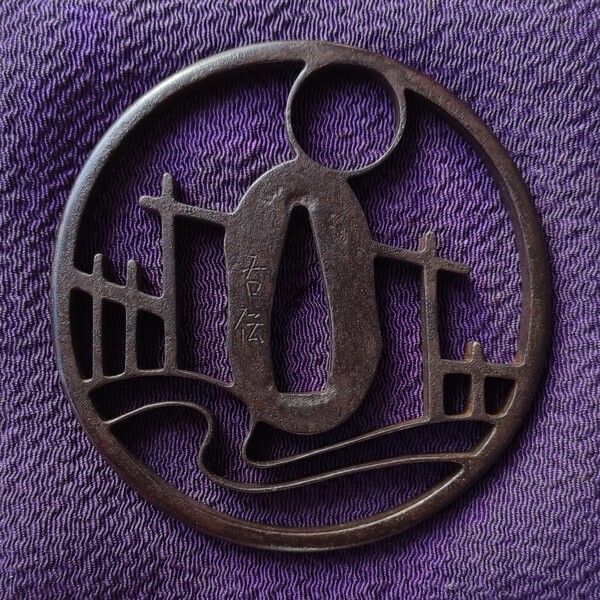
-
 20
20
-
 19
19
-
 1
1
-
 5
5
-
-
Please move to sold archive or remove
-
Sold to a member of the board, thanks!
-
 1
1
-
-
Hold pending payment
-
 1
1
-
-
Modern tanto made by Minamoto Shigehide, real name Shibuichi Fumi (四分一二三), born September 27th 1912, he signed first with Akishige (昭重) and studied under Satō Akinori (佐藤昭則), gō Musen (夢船).
The blade shows a prominent "Norishige style" hada, with predominant masame along the ha resulting in prominent sunagashi and kinsuji in the gunome hamon.
The sugata is koto-like with a visible uchizori and bohi on both sides.
The mei shows this was made as mamori-gatana, so most likely he put an extra effort to make it well.
It's in shirasaya with solid silver habaki.
Nagasa 25.2cm Motohaba 2.36cm
Kasane 6.8mm Sori uchizoriMei: 源重秀 Minamoto Shigehide
Nengo: 平成二年正月 Heisei 2 the first month (January 1990)
石塚氏代々 For the future generations of Ishizuka (family)Price 1200€ plus shipping and Paypal
Please note that buyers from outside EU might face extra costs cause sending blades outside Italy can be troublesome, so i'll need to ship to another EU country in order to export it.-
 1
1
-
 1
1
-
-
SOLD to a member of the board, thank you
-
 1
1
-
-
Hold pending payment
-
Price down to 800€
-
河内守藤原正広 Kawachi no Kami Fujiwara Masahiro
-
2 hours ago, GRC said:
It's a fair hypothesis Manuel (C0D), since there are some known errors with ChatGPT, but I can't imagine that all 42 references would be incorrect.
That would be a colossal failure on the part of the AI algorithm.
But that's also why this will be an interesting "check" on its reliability.
@C0D, do you have digital copies of those 3 books that you were able to search for references to "tsuba"?
I just want to make sure so we can definitely cross them off the list.
Let me know,
Thanks

We can definitely cross off the Cooper-Hewitt reference.
I searched that one digitally.
It mentions cast tsuba, but it was specifically referring to castings in Yamagane, copper, and bronze.
So maybe it's also including references where the words "cast" and "tsuba" in the same sentence?
I wonder if I pushed the program too far by asking it to provide more and more references?
Perhaps it started getting "looser" with its search constraints?
Just throwing out some initial thoughts...
It's also interesting to note that ChatGPT was reluctant to provide references to publications that were from the early 1900s.
There's 7 examples of cast-iron tsuba listed in the Hackshaw collection, with descriptions by Henri Joly.
I do have both digital and physical copies of the first two, the third only physical one.
I just checked it, it does show some tsuba and mention "pig iron" in a totally different section, nothing about tsuba made by cast iron.
So far no evidence those quotes were accurate-
 2
2
-
 1
1
-
-
10 minutes ago, GRC said:
For example, now we can potentially cross the "The Connoisseur's Book of Japanese Swords" off the list. Thanks @C0D.
By the way, do you have the 1968 or 1997 version?
Two different editions were listed in the references, and ChatGPT pointed out that there was no reference to cast-iron tsuba in the 1968 version, but there was a reference to it in the 1997 edition.
If i recall correctly should be the 1997 version, i think 1968 version is only in Japanese.
You can also rule out "The Craft of the Japanese Sword", no reference to tsuba in that book either
I should check but also in "The Art of the Japanese Sword: The Craft of Swordmaking and its Appreciation" but i don't recall any reference to tsuba there either.
So now it's 3 wrong quotes on 3 books, my guess is that it just takes titles regarding Japanese swords and put the quote you're looking for in it
Especially most of those books are not digitalized, so no way chatGPT could have read them-
 1
1
-
 1
1
-
-
It's ok I can just keep a couple that can have enough material on them and the rest give to you if you really wanna do these tests
-
4 hours ago, GRC said:
ENGLISH REFERENCE LIST:
provide references for this statement: “Cast-iron tsuba were especially popular from the mid-Edo period (18th century) onward.”
Here are some references to support the statement that cast-iron tsuba were especially popular from the mid-Edo period onward:
28. "Japanese Tsuba: From Simple to Ornate" by Gary Murtha (2014): This book notes that cast-iron tsuba became popular during the mid-Edo period and were often used by lower-ranking samurai who could not afford tsuba made of more expensive materials like gold or silver.
29. "The Art of the Japanese Sword" by Yoshindo Yoshihara and Leon Kapp (1997): This book states that cast-iron tsuba were produced in large numbers during the Edo period, with many being made from the mid-18th century onward.
30. "The Complete Guide to Japanese Sword Polishing" by Kiyoshi Kato (2012): This book mentions that cast-iron tsuba became more common in the latter half of the Edo period, and that they were often decorated with designs that imitated other materials like gold or shakudo.
31. "Tsuba: Japanese Sword Guards" by Julia Meech-Pekarik (1986): This book discusses the history of tsuba and notes that cast-iron tsuba became popular during the mid-Edo period.
32. "The Connoisseur's Book of Japanese Swords" by Kokan Nagayama (1997): This book also notes that cast-iron tsuba became popular during the mid-Edo period.
33. "Japanese Sword Mounts: A Guide for Collectors and Connoisseurs" by Hiroko Kapp and Leon Kapp (2010): This book provides a detailed history of tsuba and notes that cast-iron tsuba became popular during the mid-Edo period.
Overall, it seems that there is consensus among experts that cast-iron tsuba became popular during the mid-Edo period.
Provide more references for this statement: “Cast-iron tsuba were especially popular from the mid-Edo period (18th century) onward.”
34. "Tsuba and Japanese Sword Fittings in the Collection of the Cooper-Hewitt Museum" by Joe Earle (1983): This book notes that cast-iron tsuba became popular during the mid-Edo period and were produced in large numbers.
35. "Japanese Sword Guards: Masterpieces of Japanese Art" by Hiroi Takahashi (2008): This book provides a detailed history of tsuba and notes that cast-iron tsuba became popular during the mid-Edo period due to their durability and low cost.
36. "The Art of the Japanese Sword: The Craft of Swordmaking and its Appreciation" by Yoshindo Yoshihara and Leon Kapp (2012): This book discusses the history of tsuba and notes that cast-iron tsuba became popular during the mid-Edo period due to advances in casting technology.
Overall, these references support the idea that cast-iron tsuba were widely produced and used during the mid-Edo period.
Provide more references for this statement
37. "The Craft of the Japanese Sword" by Leon Kapp and Hiroko Kapp (2013): This book provides a detailed history of tsuba and notes that cast-iron tsuba became popular during the mid-Edo period due to their durability and affordability.
38. "Japanese Sword Guards: An Illustrated Guide for Collectors" by Ray Tsuchiyama (2017): This book provides a comprehensive guide to Japanese sword fittings and notes that cast-iron tsuba became popular during the mid-Edo period due to advances in casting technology and were produced in large numbers during the mid-Edo period.
39. "Japanese Sword Fittings: A Collector's Guide" by Basil William Robinson (1979): This book notes that cast-iron tsuba became popular during the mid-Edo period and were often decorated with intricate designs.
Overall, these references support the idea that cast-iron tsuba were widely produced and used during the mid-Edo period due to their durability, affordability, and decorative potential.
provide more references published before 1970
Finding references published before 1970 may be challenging, as most of the important works on Japanese sword fittings were published after this time. However, here are a few references that discuss cast-iron tsuba and were published before 1970:
40. "Japanese Sword-Guards" by Torigoye Yukihira (1937): This book provides a detailed history of tsuba and notes that cast-iron tsuba were produced in large numbers during the Edo period.
41. "The Japanese Sword" by Kanzan Sato (1963): This book provides a general overview of Japanese swords, including tsuba. While it does not specifically discuss cast-iron tsuba, it notes that tsuba were produced in large numbers during the Edo period.
42. "The Connoisseur's Book of Japanese Swords" by Nagayama Kokan (1968): This book provides a detailed history of Japanese swords, including tsuba. While it does not specifically discuss cast-iron tsuba, it notes that tsuba were produced in large numbers during the Edo period.
Overall, while these references do not specifically discuss cast-iron tsuba, they do support the idea that tsuba were produced in large numbers during the Edo period, which includes the mid-Edo period when cast-iron tsuba became popular.
This is me writing now:
At this point, I figured I would stop searching, since it started giving results that weren’t directly referencing cast-iron tsuba, just the increased production of tsuba during the Edo period.
Did you proof check those statements?
Cause for example in "The Connoisseur's Book of Japanese Swords" not only there's no such statement, but it doesn't even mention tsuba in it.
ChatGPT can be a great tool, but not something you should put blind trust on-
 1
1
-


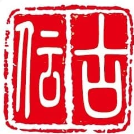
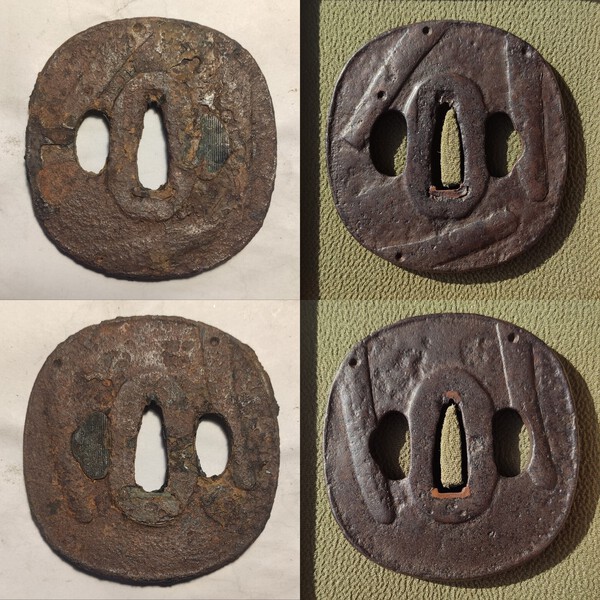
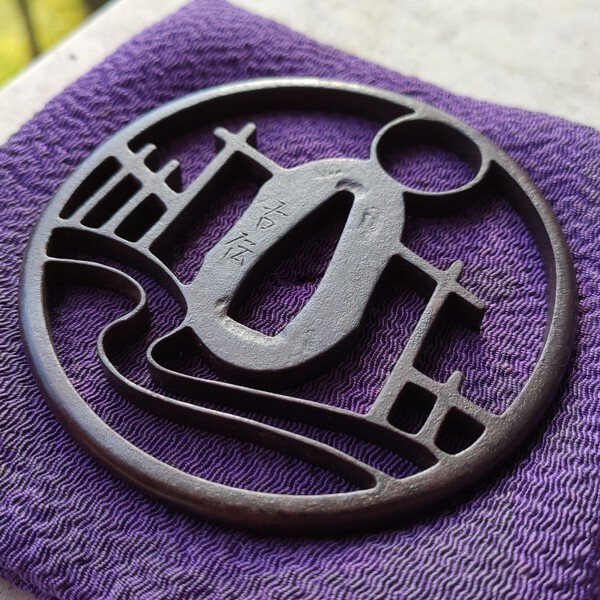
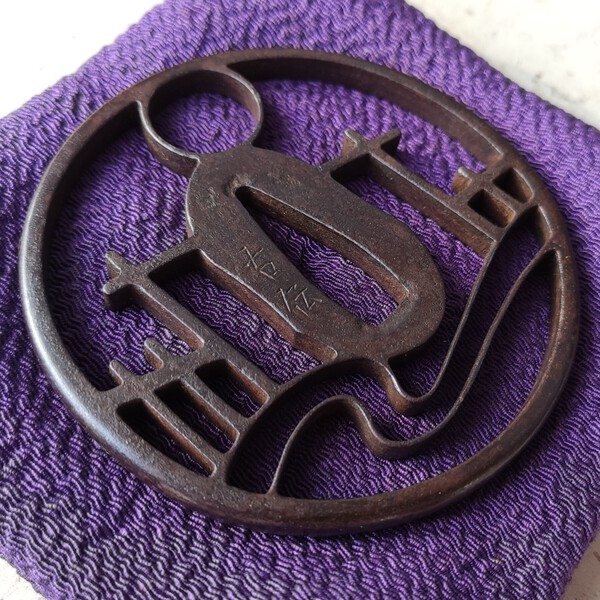
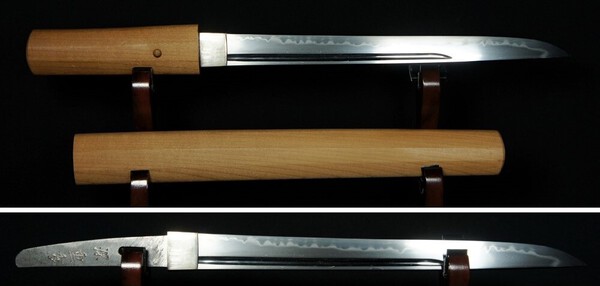
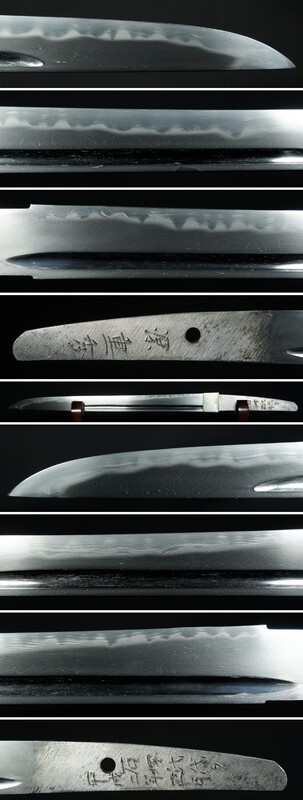

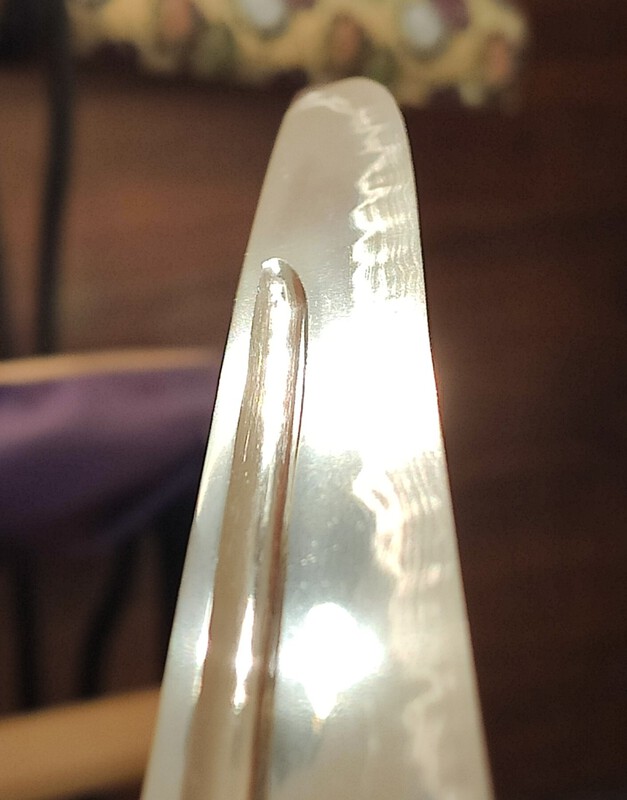
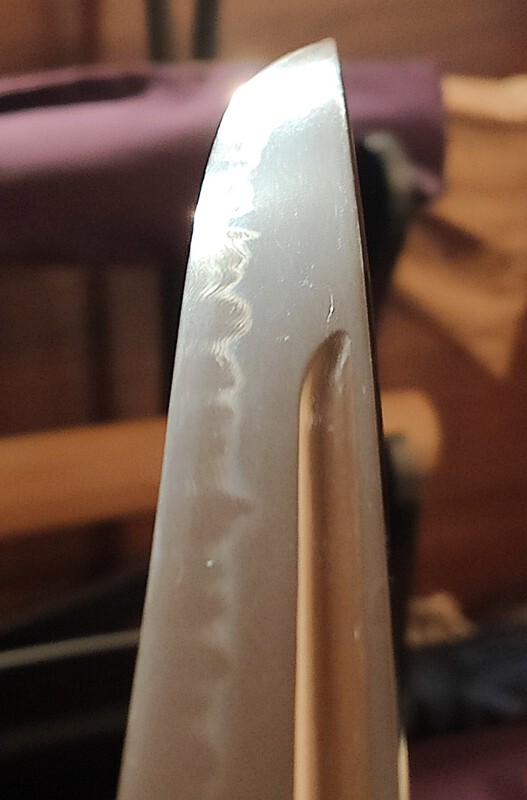
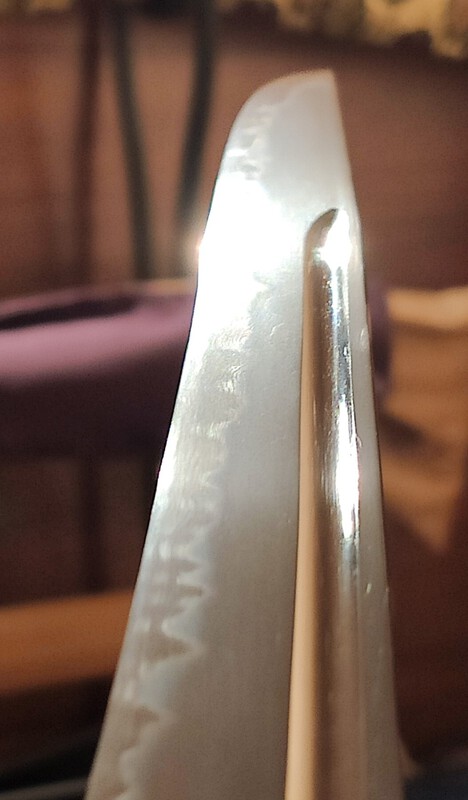
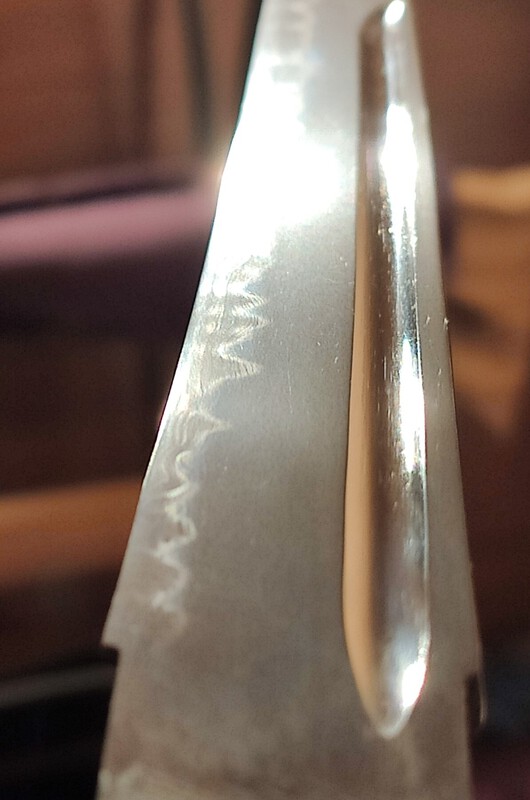
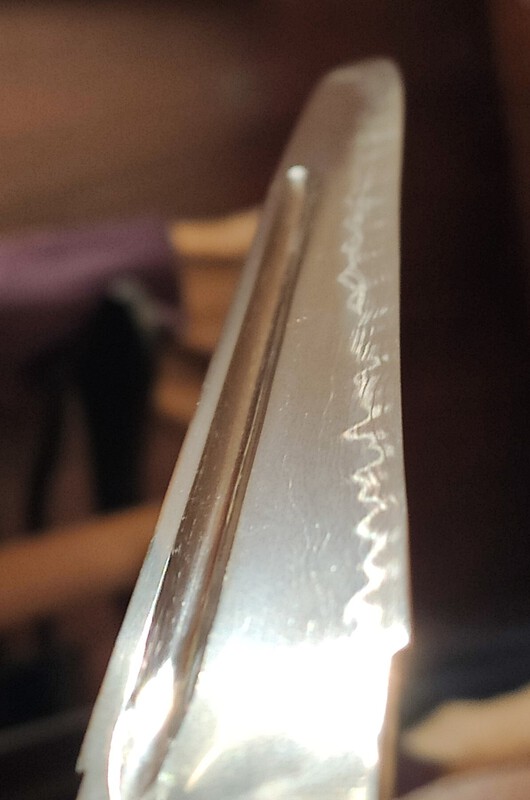
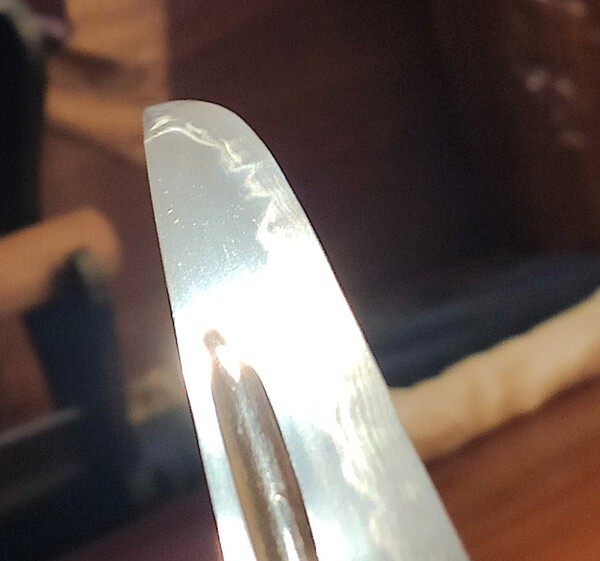
Bizen Nakago themed Tsuba - Do any have other examples?
in Tosogu
Posted
I think i saw the second tsuba (the one in the red box), i'm pretty sure is done by the same tsubashi.